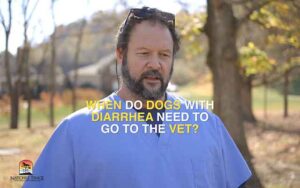From the Desk of Dr. Marc Smith…
A Question for the Doctor:
I have a 110-pound mix breed (Border Collie/St. Bernard) who was diagnosed with a partial tear of his left ACL. I have been treating Kody with conservative management for the past several months and it has been moderately successful but I was wondering if the prolotherapy could be another option for him to speed him on the road to recovery. I do not want to have the TPLO surgery and I do not believe that the tightrope surgery is a viable option for Kody either.
Dr. Smith’s Reply:
First off, I’d like to thank you for sending this question via our website. As a matter of fact, we see this type of situation a good bit in our clinic. Oftentimes prolotherapy for partial ACL tears is an excellent choice and can provide better results than surgery in this type of situation.
Below is some information on prolotherapy that I believe you will find helpful. Please feel free to contact our office at any time with questions or to schedule a consultation. We look forward to helping you and Kody!
What is Prolotherapy?
Watch the video below as Dr. Smith explains:
- What prolotherapy is
- What prolotherapy does
- How prolotherapy can help your dog
Can It Help?
Absolutely!!
Prolotherapy can help a lot of dogs with torn cruciate ligaments.
However, prolotherapy is not a substitute for surgery!
I repeat! It is not a substitute for surgery!!
Each dog has to be evaluated individually to determine if prolotherapy is a viable option.
How Many Sessions Are Needed?
4 sessions 3 weeks apart is standard.
Does Prolotherapy Require Sedation?
Yes! The injections can be somewhat painful!
How Long Does an Appointment Take?
If you have fasted your dog before the procedure, then the procedure takes about 45 minutes. You bring your pet to the hospital, then we will sedate, shave and surgically clean the stifle. Next, we do the procedure and allow the sedation to wear off. This can all be accomplished in about 45 minutes while you wait.
What Can I Expect Afterwards?
Generally speaking, the next day your dog will walk better. However, the whole process takes 4 months so expect mild improvement over time.
What Are the Risks?
The risks are minimal and include:
- Sterile inflammation
- Infection
- Risks associated with sedation/anesthesia.
However, by far and away, the biggest risk is a full-thickness tear of the partially torn ligament.
Why? Because after the treatments, these animals feel better. The leg feels better!!
And, subsequently, dogs often overuse the leg and subsequently tear the ligament in its entirety.
In other words, they feel too good while the ligament is repairing itself and the leg is overused.
Dogs receiving prolotherapy should be restrained as much as possible over the four-month course of treatment.
I know this sounds ridiculous but it increases the odds of success.
Leash walks, too, over this four-month time frame.
What Increases The Success Rate?
Weight loss!! If these dogs stay lean, the vast majority will respond great to prolotherapy.
Powerful Tools to Help Your Dog’s Ligament Challenges
You can make many quick and easy changes at home to help you give your dog an edge on easing tendon and ligament challenges.
- Learn more about torn ligaments and cruciate disease.
- Provide joint support. PET | TAO Harmonize Joint is a blend of Eastern herbs and Western supplements working together to lubricate and restore your dog’s joints.
- Ease your dog’s discomfort naturally. PET | TAO Comfort is a blend of Eastern herbs and Western supplements to soothe your dog’s arthritic challenges to make him/her more comfortable.
- Try PET | TAO Freeze Dried Beef Liver Treats. According to TCVM, the liver controls tendons and ligaments. As few as 5-6 treats per day can make a huge difference in your dog’s tendon and ligament health!
- Try a Blood-building TCVM Diet. PET | TAO Zing dog food builds Blood. According to TCVM, Blood deficiency leads to ligament tears.
- Learn more about TCVM Herbal Remedies. Chinese medicine offers many amazing natural solutions for ligament and cruciate challenges. Some good examples are:







